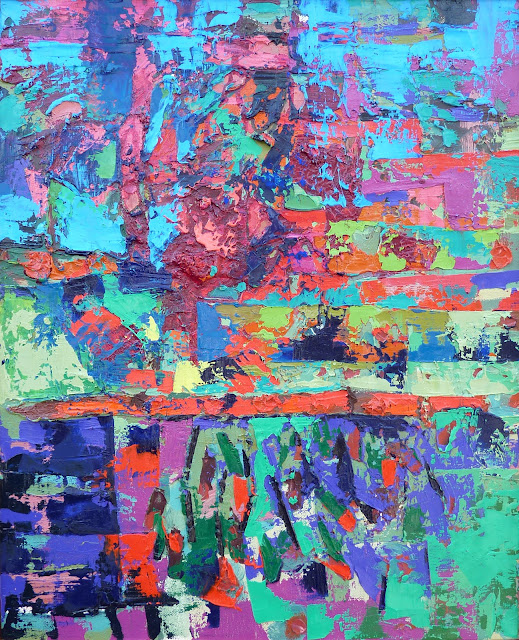 |
| Beach House (2011) oil on canvas, 18 x 14 inches |
Tuesday, January 31, 2012
Ab-Ex with Clyfford Still
The Abstract Expressionists were never a unified voice, and characterizations are invariably fluid, as each artist developed one or more signature styles. Painters sought to avoid predefined limits and to express the greatest possible range of meaning through their own visual language ... by the mid-1940s Clyfford Still was developing his signature style of colour fields that join in jagged interfaces.
- Image and text from The Art Museum (2011) Phaidon Press, p. 381
 |
| Clyfford Still "1957-D No.1" (1957) oil on canvas, 9 ft 5 in x 13 ft 3 in |
Friday, January 13, 2012
Ab-Ex with Lee Krasner
This canvas presents a series of tightly packed forms and enclosed shapes, characteristic of the work of Krasner (1908-84). An invigorating tension exists between the looseness of her expressive brushwork and rhythm, and the underlying sense of order and direction.
- Image and text from The Art Museum (2011) Phaidon Press, p. 381
 | |
| Lee Krasner -Another Storm (1963) oil on canvas, 7 ft 10 in x 14 ft 8 in |
Ab-Ex with Joan Mitchell
- Image and text from The Art Museum (2011) Phaidon Press, p. 381  | |||
| Joan Mitchell - Salut Tom (1979), oil on canvas, about 9 ft by 6 ft 6 in |
Wednesday, January 11, 2012
New Body of Work (2011-present)
Since grad school, I have watched my work veer towards the non-objective. I can't explain it in words just yet, but Georges Braque (1882-1963) can. In 1955, he said:
"I have made a very great discovery - I no longer believe in anything. Objects do not exist for me except if there is a harmonious relationship between them, and also between them and myself. When one arrives at this harmony, one arrives at a space of intellectual nothingness. In this way, everything becomes possible, everything becomes right, and life is an eternal revelation. That is true poetry."
- quote from The Art Museum (2011) Phaidon Press, p. 372
 | ||||||||||||||||||||||||||||||||||||||||||||
| Photo taken inside studio on 1-11-2011 |
Subscribe to:
Comments (Atom)



